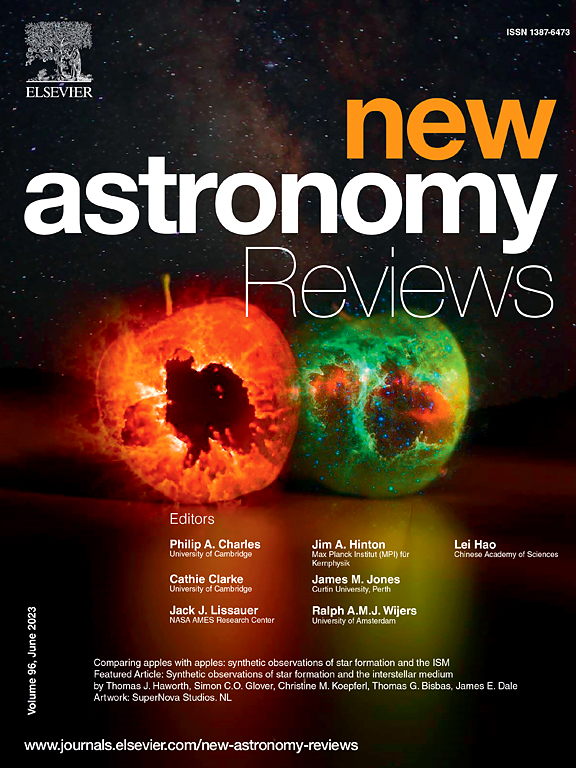通过多卫星观测分离火星尘卷风、沙尘暴和水冰云
IF 26.8
2区 物理与天体物理
Q1 ASTRONOMY & ASTROPHYSICS
引用次数: 0
摘要
空气中的尘埃和水冰云是火星大气中的两大主要成分,对火星大气的动态影响最大。空气中的尘埃会强烈改变大气温度,从而对火星天气和气候产生重大影响。火星水冰云也会产生辐射影响(包括直接影响和通过尘埃循环反馈影响),并让人们深入了解火星水循环以及有关宜居性和生命的重要问题。二十多年的卫星观测在了解与火星空气尘埃和水冰云相关的气象过程方面发挥了关键作用。因此,本研究借助不同火星轨道器上的传感器进行的成像观测,对尘埃、尘暴和水冰云进行了回顾。我们从总体上讨论了它们的特征、相关性和年际变化,以帮助支持建模和预报。尘埃和水冰的垂直分布及其动力学、微物理和辐射相互作用也需要更多关注。目的是准确预测大气的热行为,同时考虑到尘埃和水冰与温度之间复杂的相互作用。本文章由计算机程序翻译,如有差异,请以英文原文为准。
Isolating Martian dust devils, dust storms, and water ice clouds through multi-satellite observations
Airborne dust and water ice clouds are the two major atmospheric constituents on Mars that have the most dynamic impact on its atmosphere. Airborne dust strongly alters atmospheric temperatures, therefore significantly impacting Martian weather and climate. Martian water ice clouds also have radiative impacts (both direct and via dust cycle feedbacks) and provide insight into the Martian water cycle and important questions about habitability and life. Satellite observations spanning more than two decades play a pivotal role in understanding the meteorological processes associated with airborne dust and water ice clouds on Mars. Therefore, this study reviews dust devils, dust storms, and water ice clouds with the help of imaging observations made by the sensors onboard different Mars orbiters. We discuss their characteristics, correlations, and inter-annual variation in general, in order to help support modeling and forecasting. The vertical distribution of dust and water ice and their dynamical, microphysical, and radiative interactions need more attention as well. The aim is to predict the thermal behavior of the atmosphere accurately, considering the complex interplay of dust and water ice forcing with temperature.
求助全文
通过发布文献求助,成功后即可免费获取论文全文。
去求助
来源期刊

New Astronomy Reviews
地学天文-天文与天体物理
CiteScore
18.60
自引率
1.70%
发文量
7
审稿时长
11.3 weeks
期刊介绍:
New Astronomy Reviews publishes review articles in all fields of astronomy and astrophysics: theoretical, observational and instrumental. This international review journal is written for a broad audience of professional astronomers and astrophysicists.
The journal covers solar physics, planetary systems, stellar, galactic and extra-galactic astronomy and astrophysics, as well as cosmology. New Astronomy Reviews is also open for proposals covering interdisciplinary and emerging topics such as astrobiology, astroparticle physics, and astrochemistry.
 求助内容:
求助内容: 应助结果提醒方式:
应助结果提醒方式:


